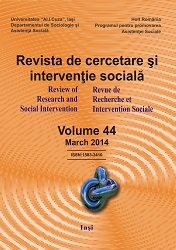The Shifting Reality of Repulsive Urban Areas between Public Perception and Crime. Case Study: Bucharest Municipality
The Shifting Reality of Repulsive Urban Areas between Public Perception and Crime. Case Study: Bucharest Municipality
Author(s): Aurel Gheorghilas, Mariana NAE, Bogdan Suditu, Liliana DUMITRACHE, Silviu NeguţSubject(s): Social Sciences
Published by: Expert Projects Publishing
Keywords: repulsive urban areas: real and imaginary space; selective residential mobilities; crime levels: incivilities: address effect; Bucharest.
Summary/Abstract: Urban spaces cannot be dissociated from the constructions of the social or imaginary space. The resulting representations articulate on repulsiveness and attractiveness attributes. Based on a humanistic geographical approach, the aim of this article is to identify those representations, playing on the relationship between repulsive urban spaces and the social deviance, as an attribute of the social space. The repulsive urban spaces are embedded themselves on the collective imaginary of a perceived offence as well as on the presence of incivilities. The study used the data obtained from face to face questionnaire survey on 1,176 persons. The results of the applied multiple regression analysis showed that the urban spaces’ unsafeness is not closely dependent on the urban incivilities’ impact or the sanitation or cleaning of the public spaces. Overall, the poor quality of life within the city, the negative image of the neighbourhoods/derelict built urban environment were the most predictable variables for estimating the urban unsafeness.
Journal: Revista de Cercetare şi Intervenţie Socială
- Issue Year: 2014
- Issue No: 44
- Page Range: 86-102
- Page Count: 17
- Language: English

